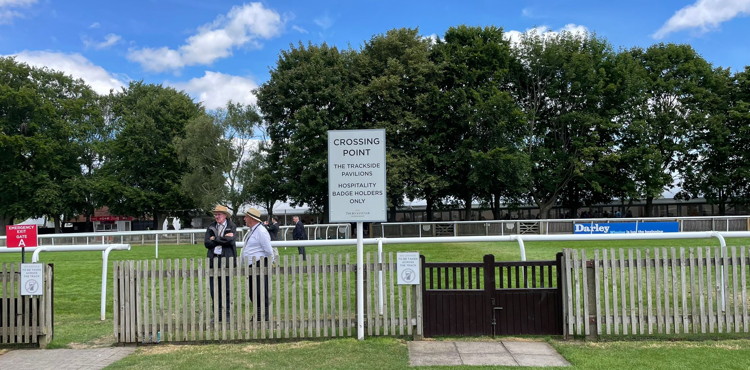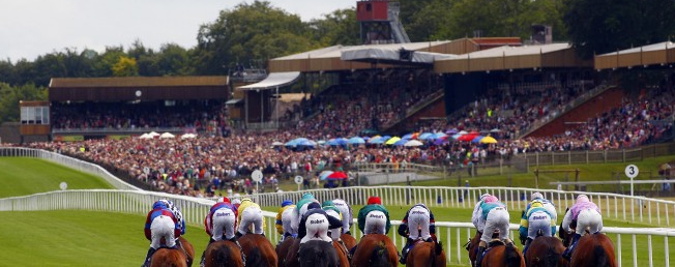Newmarket July Festival Betting Offers 2024
 The July Festival has a lot of parallels to Goodwood later in the month, a celebration of top level flat racing and glorious British summertime. The three-day festival has been going in some shape or form for over 250 years at the world’s most historic horse racing course, Newmarket, and is focused around the July Cup, the prestigious Group 1 British Champion Series race on the Saturday with a prize pool of over half a million. This however is just one of seven group races over the three days that make this one of the best summer racing events on the calendar.
The July Festival has a lot of parallels to Goodwood later in the month, a celebration of top level flat racing and glorious British summertime. The three-day festival has been going in some shape or form for over 250 years at the world’s most historic horse racing course, Newmarket, and is focused around the July Cup, the prestigious Group 1 British Champion Series race on the Saturday with a prize pool of over half a million. This however is just one of seven group races over the three days that make this one of the best summer racing events on the calendar.
Known as one of the fastest meetings of the year, the average race length being less than a mile. This one can be blink and you miss it as some of the fastest throughbreds compete at the peak of the season. Betting on this event is popular and the bookies put in some extra effort with their offers for this event due to the lack of other sporting events going on at the same time. We’ve scouted the UK’s top online bookmakers to find the best value promotions that can help you add value to your July Festival betting, whether you are looking for a new customer deal or retention offer you need look no further.
The event is sponsored by Bet365, known as one of the best horse racing sites. If you don’t have an account with them it is worth getting one for this meeting especially as they commonly will have better prices and more places than the others.
July Festival Betting Offers for 2024
This event has not started yet, please check back nearer the time. For other offers see our main loyalty page.
2023 Race Cards & Schedule
Newmarket Racecourse has the ability to welcome around forty-five thousand people through its doors and being the home of the Jockey Club and flat racing it’s not surprise that it hosts a Festival once a year. Though it’s known as the July Festival that can be slightly misleading, on account of the fact that it actually takes place during varied months in the summer depending on what else is going on at the venue. That said, organisers try to keep it to July whenever possible.
Newmarket is the home of two of British flat racing’s most popular and enduring races; the 1,000 Guineas and the 2,000 Guineas. That doesn’t mean that the July Festival isn’t worthy of a mention when it comes to a discussion about events on the course, however. It has been taking place since 1765 and is therefore one of the oldest such meetings in the racing calendar. It’s one of the ones that people know the least about, though, so we’ll try to fix that here.
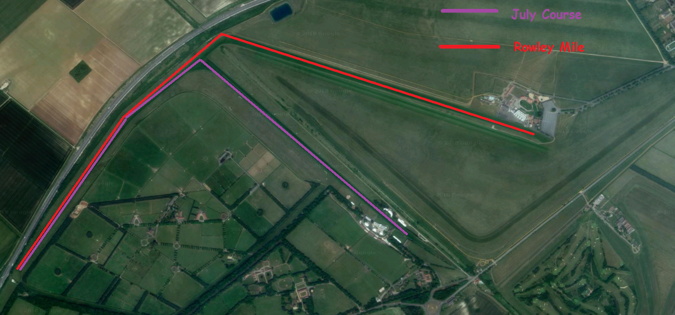
The Festival takes place over three days, getting started on Ladies Day Thursday. The atmosphere here is decidedly relaxed, with Best Dressed competitions and other moments of fun. Feel Good Friday features the first of the Festival’s Group 1 races. The most prestigious race of the event occurs on the Saturday, lending the day its name. As a result, Darley Day can be considered to be the most serious of the racing days in terms of what you’ll be able to see take place on the track.
When it comes to the track, the entire Festival takes place on the Summer Course, also known as the July Course. Two miles and twenty-four yards in length, the July Course has a bend to the right at the halfway point. It’s in stark contrast to the fair more straightforward Rowley Mile Course, which is used in the spring and autumn months. Not every racecourse in the country can boast more than one track, but Newmarket is one of the few that can and both tracks have plenty to offer racing fans.
Ladies Day – Thursday 13th July
| Time | Race | Grade | Distance |
|---|---|---|---|
| 1:50 | Bahrain Trophy Stakes | Group 3 | 1m 5f |
| 2:25 | July Stakes | Group 2 | 6f |
| 3:00 | Bet365 Handicap | Class 2 | 6f |
| 3:35 | Prince of Wales’s Stakes | Group 2 | 1m 4f |
| 4:10 | EBF Maiden Fillies’ Stakes | Class 2 | 6f |
| 4:45 | Sir Henry Cecil Stakes | Listed (class 1) | 1m |
| 5:20 | Boodles Handicap | Class 3 | 1m |
KEY: m – Miles, f – furlong(s), y – yards
Feel Good Friday – Friday 14th July
| Time | Race | Grade | Distance |
|---|---|---|---|
| 1:50 | Bet365 Handicap | Class 2 | 1m 2f |
| 2:25 | Duchess of Cambridge Stakes | Group 2 | 6f |
| 3:00 | Bet365 Trophy | Class 2 – Heritage Handicap | 1m 6f |
| 3:35 | Tattersalls Falmouth Stakes | Group 1 | 1m |
| 4:10 | EBF Maiden Stakes | Class 3 | 7f |
| 4:45 | Racing TV Handicap | Class 3 | 7f |
| 5:20 | Home of Racing Handicap | Class 2 | 5f |
KEY: m – Miles, f – furlong(s), y – yards
Darley July Cup Day – Saturday 15th July
| Time | Race | Grade | Distance |
|---|---|---|---|
| 1:40 | British EBF Fillies’ Handicap | Class 3 | 7f |
| 2:15 | Fillies’ Handicap | Class 2 | 7f |
| 2:50 | Mile Handicap | Class 2 | 1m |
| 3:25 | Superlative Stakes | Group 2 | 7f |
| 4:00 | Bunbury Cup | Class 2 – Heritage Handicap | 7f |
| 4:35 | Pertemps July Cup Stakes | Group 1 | 6f |
| 5:10 | Trustatrader Handicap | Class 3 | 1m 4f |
KEY: m – Miles, f – furlong(s), y – yards
July Festival Feature Races
The Sir Henry Cecil Stakes
First run back in 2007, the Sir Henry Cecil Stakes is named in honour of Sir Henry Cecil, a ten time Champion Trainer. It’s open to horse that are aged three and is classed as a Listed flat race. It was originally named the Xplor Conditions Stakes before becoming the Stubbs Stakes in 2013 and then getting its current title the year after.
Richard Hughes, Ryan Moore and Frankie Dettori are the race’s most successful jockeys courtesy of their two wins to date. It’s run over one mile and there’s a weight limit of nine stone and three pounds, apart from fillies that are given an allowance of five pounds. As well as taking home a slice of a price fund that reached up to £49,185 in 2023, winners are also presented with a rose from the Warren Place Garden, which was owned by Sir Henry Cecil himself.
The Bahrain Trophy
Lasting for one mile and five furlongs, the Bahrain Trophy is one of the most thrilling races of the weekend because of the speed at which it’s run. It used to boast the name of the H & K Commissions Handicap, receiving its current title in 1991. Open to three-year-olds, it became a Listed race in 1990.
It’s interesting to note that it used to be a longer race, taking place over one mile, six furlongs and one hundred and seventy-five yards until it was reduced to its current length in 2006. It became a Group 3 race in 2009 and is one of the races that many consider a stepping stone on a horse’s journey to the St. Leger. The purse in 2023 was four times what was on offer for the Sir Henry Cecil Stakes, giving you an indication of how seriously it’s taken.
The Princess of Wales’s Stakes
It’s no exaggeration to say that different races have their own history, with the Princess of Wales’s Stakes having first been run in 1894. That makes it one of the oldest races to be run during the July Festival, named in honour of Alexandra of Denmark, the Princess of Wales in 1863. Open to horses aged three and over, there’s a weight allowance of nine stone and two pounds for those and four and over or eight stone four pounds for the three-year-olds.
The race was lengthened to take place over one mile and four furlongs in 1902, having previously been four furlongs shorter. The Princess of Wales’s Stakes was given Group 2 status in 1978 and five horses have won it more than once since its inauguration. There are countless flat races that boast Lester Piggott as the most successful jockey in its history and this is one of them; he’s won the race eight times. In 2023 the prize pot amounted to £117,913, of which the winner took home over £70,887.
The July Stakes
You’d be forgiven for thinking that a race named after the Festival itself might be the most important of all, but that’s not the case here. The July Stakes was established in 1786 and is the oldest such race exclusively for two-year-olds. It’s for colts and geldings nowadays, though it was for any horse until the current restrictions became active in 1977. Originally, if horses had been sired by either Eclipse or Highflyer then that had to carry an additional three pounds.
As it’s only for two-year-olds, no horse has won it more than once. Both George Fordham and Sir Gordon Richard have won it six times as jockeys, but that’s as nothing compared to the seven victories amassed by Frank Butters as a trainer. The race boasts a weight of nine stone, with winners of Group 1 and Group 2 races having to carry an extra three pounds. In 2023 the total prize money on offer for it was £98,370.
The Duchess of Cambridge Stakes
Given the July Stakes is for colts and geldings, it’s only right that there’s an alternative race for fillies. That race is the Duchess of Cambridge Stakes, which was established as the Cherry Hinton Stakes in 1947 and given its current name in 2013 when the Windsor Forest Stakes at Ascot became the Duke of Cambridge Stakes as a celebration of the marriage of William and Kate in 2011.
When the current set of gradings for races came in this one was assigned as a Group 3 offering, shifting to Group 2 in 1996. It’s one of a few races that doesn’t have the name of Lester Piggott attached to it as the most successful jockey, with Walter Swinburn and Frankie Dettori having won it five times each. When it comes to what you can learn from a race, the winners are often considered favourites for the following year’s 1,000 Guineas.
The Falmouth Stakes
Open to both fillies and mares aged three and over, the Falmouth Stakes is a Group 1 race that dates back to 1911. Named after Evelyn Boscawen, who boasted the title of the 6th Viscount of Falmouth. She owned and bred racehorses in the nineteenth century, earning her the honour. It wasn’t always named after her, however. In 1975 it was sponsored by Child’s Bank and was named the Child Stakes accordingly.
It was given Group 2 status in 1987 and became a Group 1 race in 2004. Sonic Lady and Soviet Song have each won it twice, with that man Lester Piggott being the most successful jockeys once again thanks to his seven victories. In terms of weight, it’s eight stone twelve pounds for three-year-olds and nine stone seven pounds for horses aged four and over. In the 2023 running there was £286,813 at stake, with the winner taking home £165,347.
The Superlative Stakes
Previously named in honour of a successful owner of racing horses who died in 1975, Bernard van Cutsem, the race got its current name in 1991. Superlative won the July Stakes in 1983, and it was felt as though the victory deserved recognition. It takes place over four furlongs and is for two-year-olds. There’s a weight of nine stone and one pound attached to it, though fillies are allowed an additional three pounds.
The race was Listed until 2003, at which point it became a Group 3 offering. That moved to Group 2 in 2006 and, owing to the fact that it’s exclusively for two-year-olds, no horse has won it more than once since its inception. Steve Cauthen, Richard Hughes and Pat Eddery hold the record for being the most successful jockeys with four wins apiece, whilst Henry Cecil, who has a race named after him don’t forget, won it nine times as a trainer. When the race was run in 2023 the winning horse took home over £56,710 from a £98,370 pot.
The Bunbury Cup
The man who introduced both the 1,000 and 2,000 Guineas to Newmarket was named Sir Charles Bunbury, so it’s entirely appropriate that he should have a race at the racecourse named in his honour. That race is, of course, the Bunbury Cup and it’s for horses aged three and over. It lasts for seven furlongs and is a handicap race.
In terms of the best horses that have taken part in the race, none have come close to Mine, which won it in 2002 and then consecutively in 2005 and 2006. Who else but Lester Piggott would most the most wins as jockey with seven, picking up consecutive victories on the back of En Attendant in 1993 and 1994. There was £118,000 in the purse in 2023 and £61,850 of that went to the winner.
The July Cup
The July Stakes might have made you think it was the most prestigious race of the week on account of the name of the Festival being included in the title, but in reality it’s the July Cup that takes that honour. Considered to be one of the most thrilling sprint races of the flat racing calendar, it takes place over six furlongs and is raced by horses aged three and over.
The race was established in 1876 and was a Group 2 race when the current gradings came into being. In 1978 it was shifted to become a Group 1 race and it has remained that ever since. The winner is thought to be the best sprinter in all of Europe, which explains why the purse in 2023 was £618,250 with £356,420 to the winner. In terms of weight, it’s nine stone for three-year-olds and nine stone six pounds for those aged four or over, with fillies and mares given three pounds.
About the July Festival
Newmarket Racecourse
 Based in the Suffolk town of the same name, Newmarket Racecourse was founded in 1636. Racing had been taking place there before that, with Lord Salisbury and the Marquess of Buckingham racing two horses for a £100 prize in 1622. The Newmarket Town Plate was inaugurated by Charles II in 1655 and in 1671 he actually rode in the race, becoming the first reigning monarch to ride a winner in a professional competitive race.
Based in the Suffolk town of the same name, Newmarket Racecourse was founded in 1636. Racing had been taking place there before that, with Lord Salisbury and the Marquess of Buckingham racing two horses for a £100 prize in 1622. The Newmarket Town Plate was inaugurated by Charles II in 1655 and in 1671 he actually rode in the race, becoming the first reigning monarch to ride a winner in a professional competitive race.
The popularity of the course grew in the years that followed and by 1840 there were seven popular meetings throughout the year. One of them was, of course, the July Meeting, which used to place over a few days around the tenth of the month. Even so, there’s no question that Newmarket’s popularity owes a huge amount to the two Classics that take place on the course every years: the 1,000 and the 2,000 Guineas.
The latter first took place in 1809 and was for three-year-old colts and fillies, with the former being established five years later and restricted to fillies alone of the same age. They are two of British horse racing’s five Classics, being followed later in the year by the Epsom Oaks, the Epsom Derby and the St. Leger Stakes. Such is the popularity of both races that alternatives were set up across Europe.
As mentioned earlier, it boasts two courses in the form of the Rowley Mile Course, which boasts a one mile and two furlong straight, and the July (or Summer) Course. There’s also another area named the Round Course, but this doesn’t garner as much attention or interest as it’s only used once a year for the Newmarket Town Plate.
July Festival Trivia
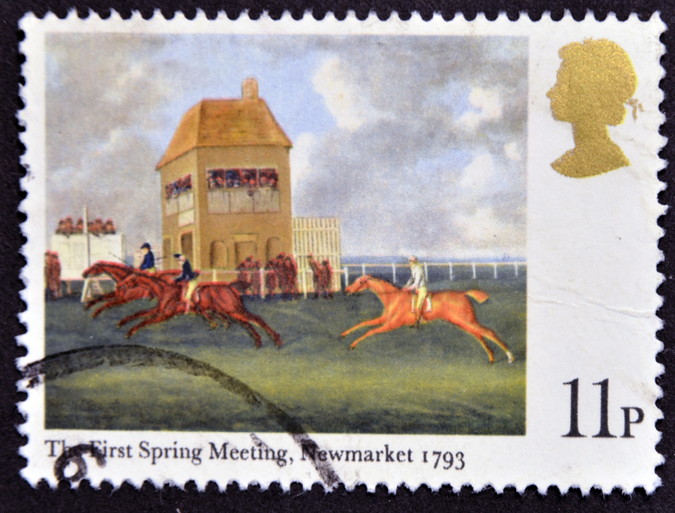
There are numerous things of note to tell you about Newmarket Racecourse and the July Festival. There are a number grass airstrips at the venue, for example, which were used in the Second World War by the RAF. In more recent times, Ray Cochrane and Frankie Dettori were using one of them to fly in a light aircraft from Newmarket to Goodwood Racecourse, only for the aircraft to crash on take-off. The two jockeys were injured in the 2000 accident, but the pilot lost his life.
Another interesting fact comes in the manner of the racecourse actually stretching across two counties. Although typically considered to be located in Suffolk, around half of the course actually stretches into Cambridgeshire. There’s also the fact of the aforementioned Newmarket Town Plate being the oldest race in existence, having first taken place back in 1666.
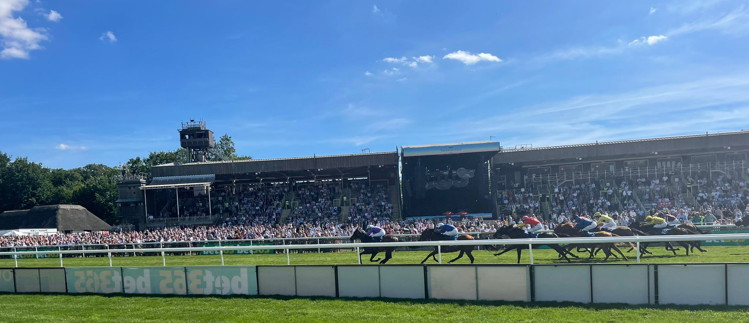
When it comes to talking about the Festival specifically, you might be interested to know that more than a tonne of salmon is eaten during the week; more than any other food stuff. The method of using a camera to identify the winning horse in a race was first used at Newmarket in 1949.
When the day’s racing comes to a finish, the lights come on and a series of musical concerts known as Newmarket Nights get underway. Typically the Saturday night sees some of the biggest names in pop music performing, with Kylie Minogue hosting a gig there in 2015. Those that have been declared as the Best Dressed female on Ladies Day, the Best Dressed male on Friday or the Best Dressed Couple on the Saturday will often head to the concerts to dance the night away.

